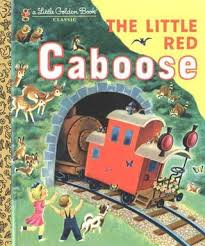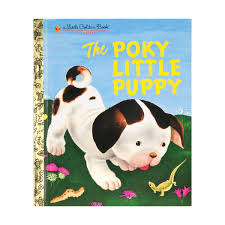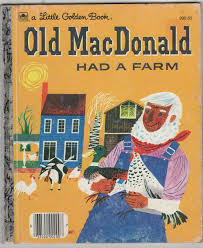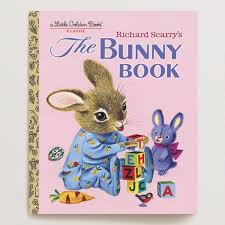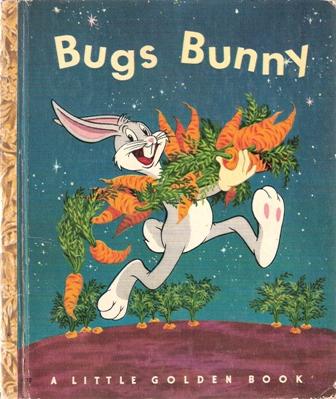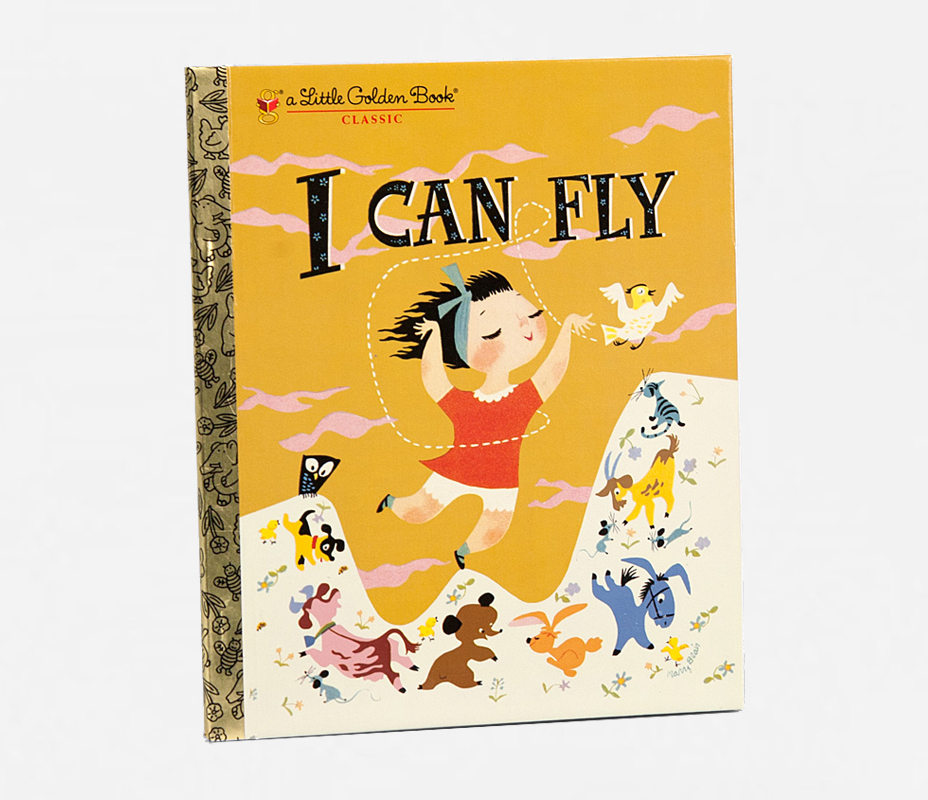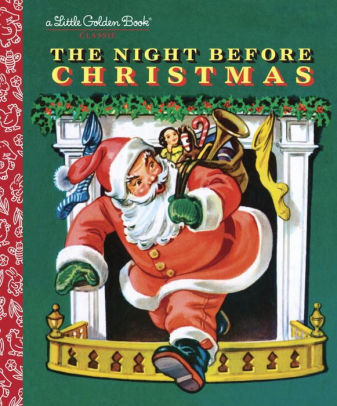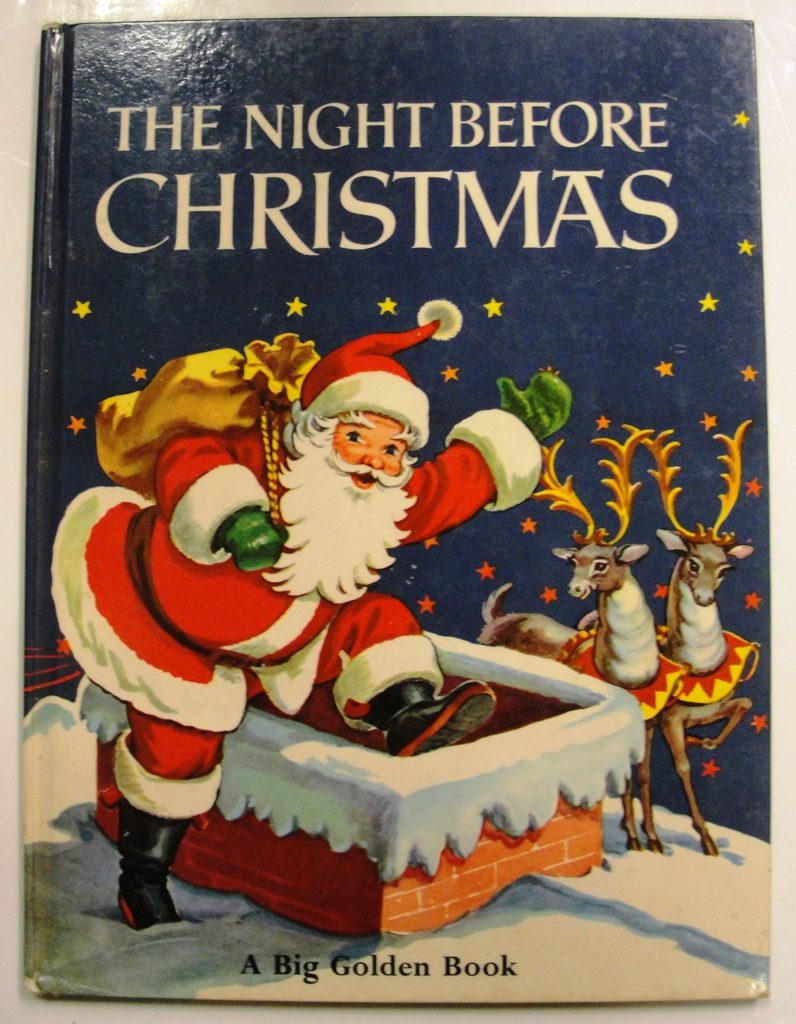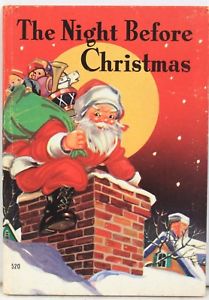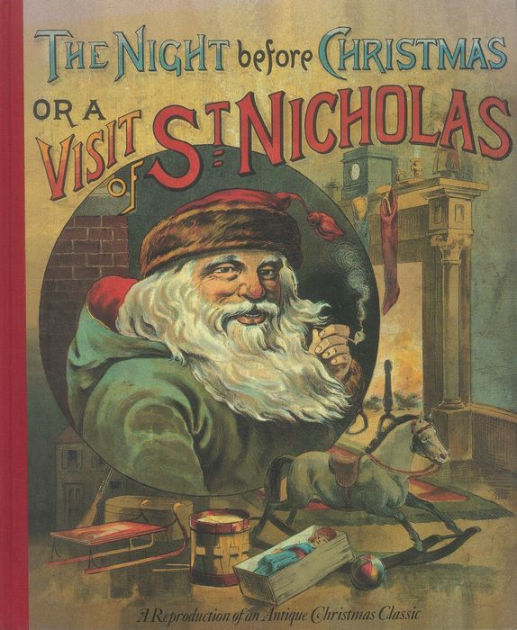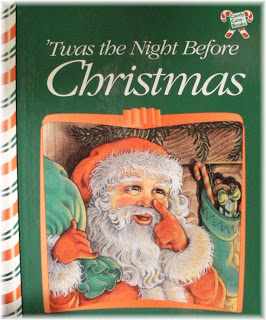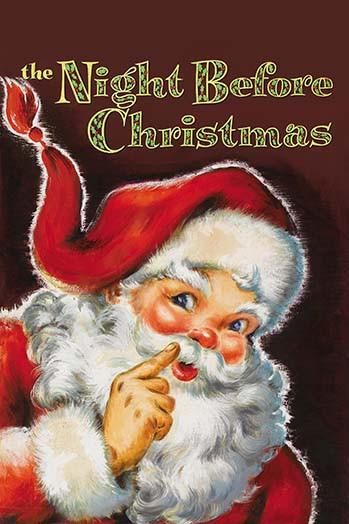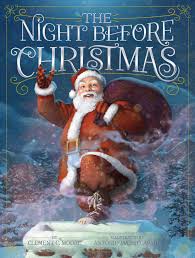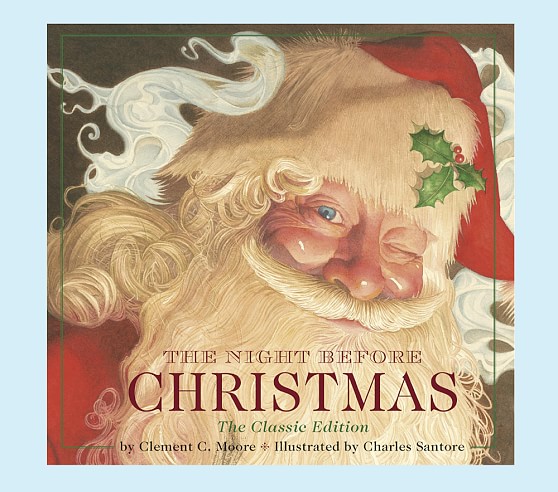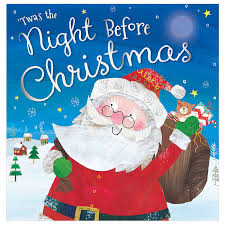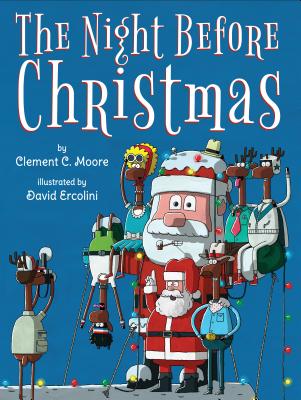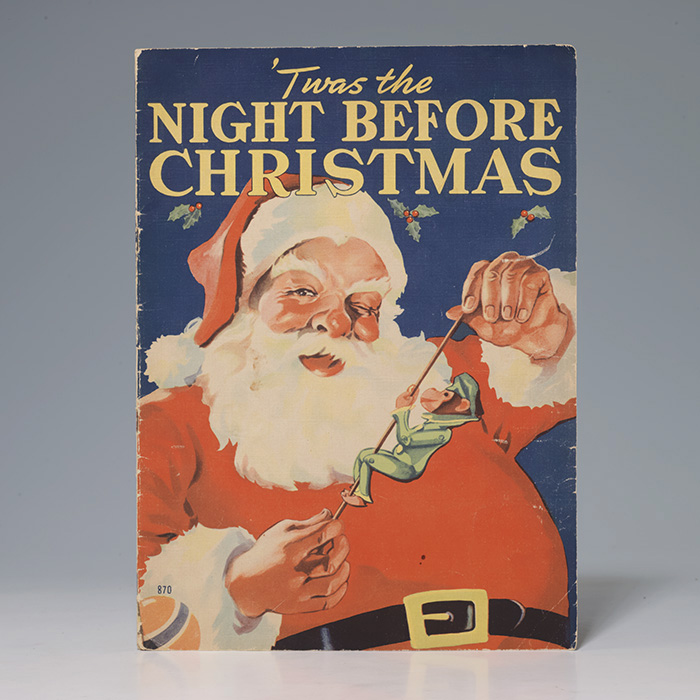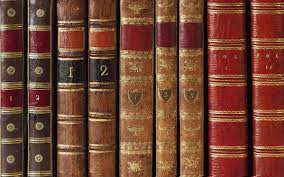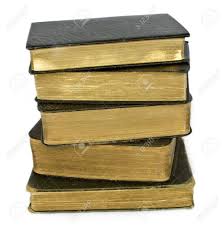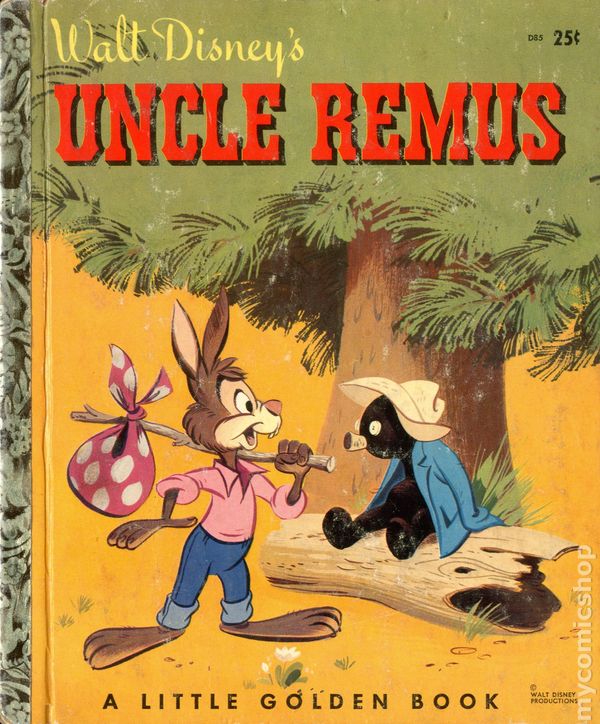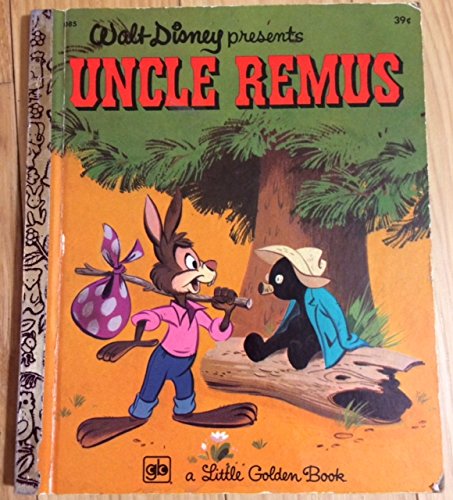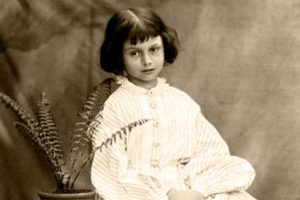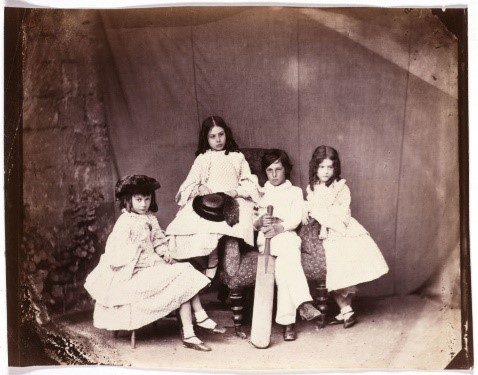
Alice in Wonderland offers a most repeated famous quote. It begins, “I’m late, I’m late…!” Oh, how many times have I sung this lyrical quote as I blow wishes on each street signal to turn green. This is easily one of my favorite classical tales from my youth. I didn’t love it it because I understood it. Quite the opposite, I really didn’t have an understanding of the story until many years later. But I LOVED all the characters and how my imagination led to such colorful, vibrant, exotic and unique characters and places.
For the die hard fans, and those who perpetually contemplate the philosophies of life, this is a MUST HAVE classic as a collection builder. Now, you can start building your collection with deciding what type of collection you wish to build.
What Makes a Collection?
You. The collector! That’s right. People collect all sorts of objects based on a multitude of particulars. Color and Pattern collections. Consider collecting coffee mugs. Choose a favorite color; pink. Or maybe all polka dot coffee mugs. Think a unique baseline for your collection. When you set a baseline with average parameters, your collection will be mostly overwhelmed with items that can be found anywhere…and well, everywhere. Make the collection hunting fun. Pretend it is a treasure hunt!
Likewise, vacation travelers often seek keychains or shot glasses from each location along their trip. Do a great deal of traveling and this could get interesting. However, those items are almost guaranteed to be found in the airport shops and gas stations galore. Why not change your collection to require more exclusive characteristics or theme but open it up to additional objects? For example, collect Looney Toon key chains and magnets.
Book Collecting
Book collecting is a HUGE favorite hobby for millions of people. Literary heads collect based on classic status. Fan-based collectors will collect every published story from a specific author, including any other secret pen name the author may produce additional material. All books related to baking, children’s books, holidays, crafts, business and more.

Since I was a young girl, I have saved special books where I felt very connected to the story or somehow the book represented a connection for me. A teacher gave me a book, I won a book in a contest, or it was a special treat buy at a book fair. Because I loved these books so much and the ability to read is one I hold very valuable, I have kept many books from my youth. Plus, I have added more along the way. Especially, I have added kids books. Ones I have read or series of books.
Illustrations Go Wild
Not only do I have a collection of children’s books, I have a couple collections of classic books sub-categorized by the illustrations. The first time I got this idea to collect based on illustration of a story was while I was working at a dollar store. It was just before Christmas and we had boxes of holiday themed books come in as inventory. As I was setting them out for display I realized the same story, The Nutcracker, was offered in four different books. Big pages and more current looking illustration, older style with golden edging and Victorian looking drawing. The miniature book with Disney characters and the big board book for babies.
Publisher Happy
Part of my children’s book collection is a large collection of Golden Books. The Saggy Baggy Elephant, The Tawny Scrawny Lion, The Poky Little Puppy, My Prayer Book, and the list of these goes on forever. I have nowhere near all I could have of this collection. However, I have several repeats of a story in the…you guessed it, miniature Golden Book collection in my personal library!
Age of Copyright and Publication
Age of an object is a MAJOR distinctive characteristic used for baseline collections. In my case, I often look for illustrations prior to my birth year. It’s exciting to see how I changed the world! Of course, I didn’t really change the course of illustrations in this world. However, I am not dead yet and perhaps I still might!
Often, I look on the inside front pages for the dates of copyright and publications. It’s fascinating to me to see how artists portrayed St. Nicholas versus Santa Claus versus Kris Kringle between the 1920’s and 30’s until today. But the text of the story changes over time as well. For example, in the story, T’was Night Before Christmas…currently, The Night Before Christmas. Old school versions of the story include the man in the red suit smoking a pipe. Today, smoking is taboo and certainly not what a role model such as Santa would be doing.

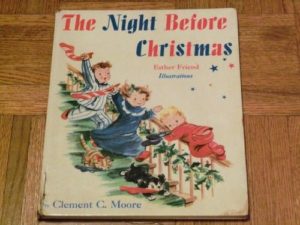
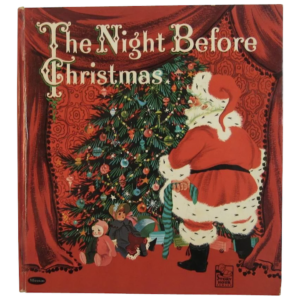
TWO Illustrations from Golden Book
More Illustrations for the Same Story
A Collection to Enjoy
Frequently, another uniqueness of an aged publication is the binding and cover of the book. I have seen beautiful leather bound books, fancy hard covers that look gilded. Passed down to me through my family, I have a dictionary version in three large, very large books. Heavy enough I need a cart or wheelbarrow to move them on my own.
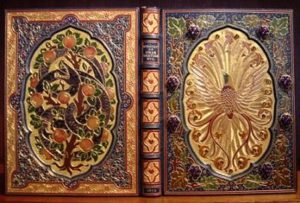
The Unexpected Find
Ironically, as I have been writing this blog, I have been seeking images to illustrate here. I find images help bring my readers into my writing. It’s my invitation for you join the visions I have in my head as I write. Hopefully, it will tug at a memory validating your life story too. That feeling of…”Oh, I remember that, or doing that…” and so on. Anyway, I recall reading this Golden Book below when I was a kid. It was a clever story about a fox, a rabbit and doll made of tar and turpentine.
Now, the book is considered politically incorrect. I suppose I have mixed feelings about books such as this one. I absolutely don’t support any activity, agenda, intention or belief of attaching racism to any character portrayed of as lesser in value to another character. However, I acknowledge the presence of issues of such matter. Whether by circumstance, intention, innuendo or however presented, these issues are happening in our world. They do deserve discussion, not just swept under the table for more resentment to build on opposing views.
“Alice in Wonderland” Facts
The history behind the fantasy is fascinating. I guess I never really thought much about there being a story behind the story. It makes sense. Most authors have inspiration to write a story. Alice in Wonderland though is such a unique and odd tale. I wonder if this is inspired by a dream. The kind of dream with an altered reality yet so real it is like you can reach out and touch its existence. In this case, fall down the rabbit hole. In 1865, Lewis Carroll self-published his manuscript of Alice’s Adventures in Wonderland.
The Real Alice and Her Siblings
She was the daughter of Carroll’s boss: Henry Liddell, the dean of Christ Church College at Oxford, where Carroll taught mathematics. Getty Lewis Carroll
Carroll formed a friendship with Henry Liddell, his wife Lorina, and their entire family. (He took this photograph of Alice, Ina, Harry, and Edith Liddell in the summer of 1860.) The little sisters in the Doormouse’s story — Elsie, Lacie, and Tillie — are references to their three daughters. Lorina Charlotte’s initials became Elsie, Lacie is an anagram of Alice, and Tillie was short for Matilda, a nickname given to Edith.
Wonderland Nearly Didn’t Exist for Us
.It was originally titled Alice’s Adventures Under Ground when he gave a handwritten copy to Alice Liddell. By the time it was published, the name had been changed to Alice’s Adventures in Wonderland. But he went through other titles along the way, including Alice’s Hour in Elf Land, Alice Among the Fairies, and Alice Among the Goblins.
This would surely have changed everything! The Queen of Hearts, nope, don’t see it in Elf Land. And how could we really enjoy Elf on the Shelf today if we had visions of Alice in Elf Land. Alice’s Adventures Under Ground isn’t terribly bad but it does sound a little more sinister and dark. I think “Wonderland” is teetering on that so I am grateful it ended up as it did. Not totally innocent and not quite sinister.
Stories told verbally; but almost never shared in written form
On a boating trip up the Thames in the summer of 1862, Carroll spun a fantastic tale for Alice Liddell and her sisters. But after that, the kids pestered him to retell the story — Carroll even wrote in his diary about telling “the interminable Alice’s adventures.” So he eventually wrote the story down and gave it to Alice for Christmas 1864. (The original was half as long as the version later published and didn’t include scenes like the Mad Hatter or Cheshire Cat.)
Carroll based the Dodo bird on himself
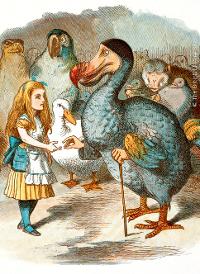
At least according to legend: In the book, Carroll alludes to the pivotal boat trip by putting the participants into the story as birds. He was the Dodo, named after his real last name, Dodgson. The author had a documented tendency to stammer, and the story is that he would introduce himself as “Do-do-dogson.”
Did the Dodo bird have a bit of a stammer? I have found nothing to describe the sound of the Dodo bird. However, it seems their intelligence has the reputation of being not very smart but actually their reputation is more appropriately an affect of their trusting humans. Their lack of fear led to them as being easy prey for humans.
Carroll Sees Through the Eyes of Alice

In addition to partial deafness and other health complications, Carroll suffered from a rare neurological disorder that causes hallucinations and makes objects appear larger or smaller than they are. The disease wasn’t discovered until 1955 by English psychiatrist John Todd. Eventually, it was named Alice in Wonderland Syndrome or Todd’s Syndrome.
Upon Medical Evaluation
Doctors believe this condition may be linked to migraines. But it could also occur with epilepsy, possibly depression or schizophrenia and some viruses. The effects can by onset by ingesting cough syrups, allergy and anti-seizure medicines as well. Can you imagine having this type of distortion occur in your day? It is suggested as rare as it is, it begins to appear in children.
My own son has epilepsy and developmental delay. He is not able to verbalize. I wonder now if when he shifts his head slightly one direction or the other to look at an object or person, is he adjusting to compensate for such hallucinations? Is he thinking, “Go ask Alice, when she is ten feet tall?” Thank you, Jefferson Airplane! Another of many famous quotes.
The Cheshire Cat climbed a real tree
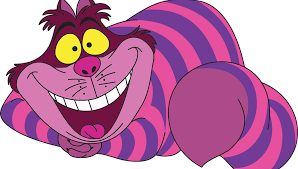
In the garden behind the Liddell home at Christ Church College, Oxford, stands a tree that is said to have inspired the famous feline’s perch.
Getty John Tenniel Another favorite character, the Cheshire Cat. Being a cat lover, I can tell you my cats have had that same smirk at different times. It’s a warning! For what is always a mystery, but FUR-SHUR you will want to be aware of any little treats your cat has left at your slippers. You might find the Door-mouse!
The author’s name wasn’t Lewis Carroll
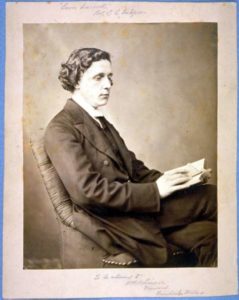
Charles Lutwidge Dodgson started using the pen name in 1856 when he published a romantic poem. It was a play on a Latin translation of his real first and middle names. Other options he gave the editor to choose from: Edgar Cuthwellis, Edgar U. C. Westhill, and Louis Carroll.
Getty Rischgitz
Pen Name Association
This was actually a little disappointing to me. I liked the name Lewis Carroll. It reminded me of Lewis & Clark and Carroll O’Connor. My grandpa was a Lewis (with a different spelling — Louis) and my other grandpa looked a bit like Archie Bunker, a character played by Carroll O’Connor in the television hit series, All in the Family – a 1970’s hit.
As a little girl, I was fortunate enough to spend quite a bit of quality time with my grandparents. For both sides of my family, I was the first grandchild. I loved books and both sets of grandparents would indulge me with stories. Times I especially loved were climbing up on the lap of either grandpa to cuddle in while he read a story. Treasured memories.
It was first made into a movie in 1903
Directors Cecil Hepworth and Percy Stowe made the story into a 12-minute film, which made it the longest film produced in Britain at the time. Since then, it’s inspired more than 50 TV or film adaptations and sequels.
Famous quotes like, “Mad as a Hatter” are reasons to thank Carroll
No, he didn’t invent this term for crazy. The phrase, used to describe how hat makers often got dementia from the mercury used in curing felt, had been around since the early 1800s. But Carroll, a marketing genius, popularized — and licensed it. Alice and her friend adorned cookie tins and postage stamp cases. He was the first children’s book author to license characters, so his Mad Hatter took on a life of his own.
I am Called a Madhatter
How could the MADHATTER not be my ALL-TIME FAVORITE? Of course, for me and my nickname it has nothing to do with lead exposure from wearing hats. Today, Madhatter is a term commonly used for a person who is involved in multiple happenings, possibly due to indecisiveness, or because we can’t say “no”. Perhaps an eccentric character. Me, myself and I…well, at times I can be eccentric.
I have a grand imagination and am forever coming up with new ideas. Some are great ideas, others not so much. But I am proudly creative in my thought processing. Because of this, I have had the blessings of learning new skills in different topics throughout my life. Let it be known, successful people will tell you too, success comes when you have your eggs in more than one basket! In my case, I have my creativity in more than one hat!
Queen Victoria – A Royal Fan
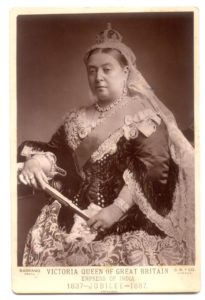
After reading Alice’s Adventures in Wonderland, Queen Victoria suggested that Carroll dedicate his next work to her. She probably should have been more specific: Carroll was a mathematician, so his next work was An Elementary Treatise on Determinants, With Their Application to Simultaneous Linear Equations and Algebraic Equations. He presented it to the Queen. One can only imagine her reaction…
The book has never been out of print
Since it was published in 1865, it has been translated into 176 languages. At the time, the book was so popular that its sequel, Through the Looking-Glass, and What Alice Found There, sold out within seven weeks of its publication.
This is a true testament to its status as a classical tale. And all the more reason you should have at least one copy in your library. At the bare minimum, one copy of the original book. You don’t have to include the sequels. Although, when you can find the set all with the same print dates, that’s a special treasure in your library. One of my beloved past times is collecting a cherished story in multiple print dates. I love the slight changes to text I find periodically, but mostly I truly love seeing the illustrations from different eras. The same story has a whole different story with a unique perspective.
Alice in Wonderland – Banned before
Alice’s Adventures in Wonderlandand the sequel, Through the Looking Glass, and What Alice Found There, were both banned in China in 1931. Why? On the grounds that “animals should not use human language.” Go figure.
In addition to the ban in China, New Hampshire banned the book in all public schools for what was perceived as possibly promoting masturbation and sexual fantasy. It remains controversial today as it is still perceived as promoting drug use. Specifically, marijuana and hallucinogenic drugs with implications for cocaine, alcohol and more.
Madhatter’s Day
Madhatter’s Day is October 6th, according to The Fact Site, and was first created by a group of nerdy friends. The idea arose from inspiration of wearing costumes and acting silly. The first Madhatter’s Day was celebrated in Boulder, Colorado in 1986. The nerds put their idea out there and in 1988 it became an official holiday and was recognized by national press organizations.
However, there is another history note to mention. The Fact Site claims the term Mad Hatter was based on lead absorption back in the 1800s. Hat makers used lead in making the hats and those who wore hats made with lead tended to go mentally insane. Therefore, these people were called Mad Hatter’s.
Visit all our categories and pages of Madhatter’s Magnificent Market!
Return to the HOME PAGE to decide which category to shop next!
http://www.goodhousekeeping.com/life/entertainment/g2919/alice-in-wonderland-trivia/
https://www.thefactsite.com/2015/10/mad-hatter-day.html – By Asher Fogle; NOV 10, 2015
National Media Museum/Royal Photographic Society/SSPL/Getty Images
Oscar Gustav Rejlander/Hulton Archive/Getty John Tenniel


